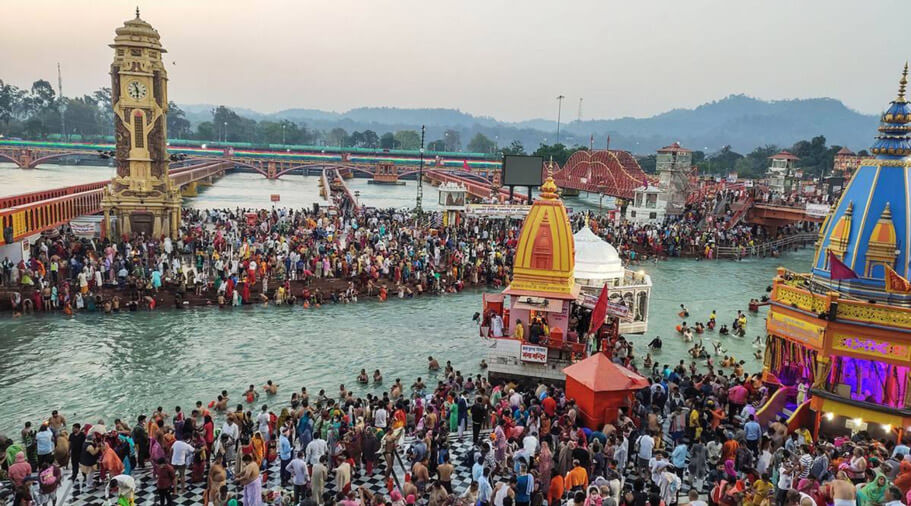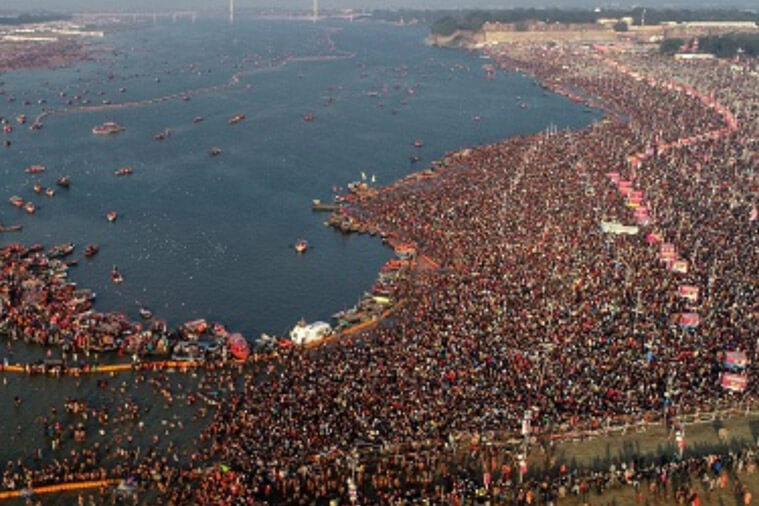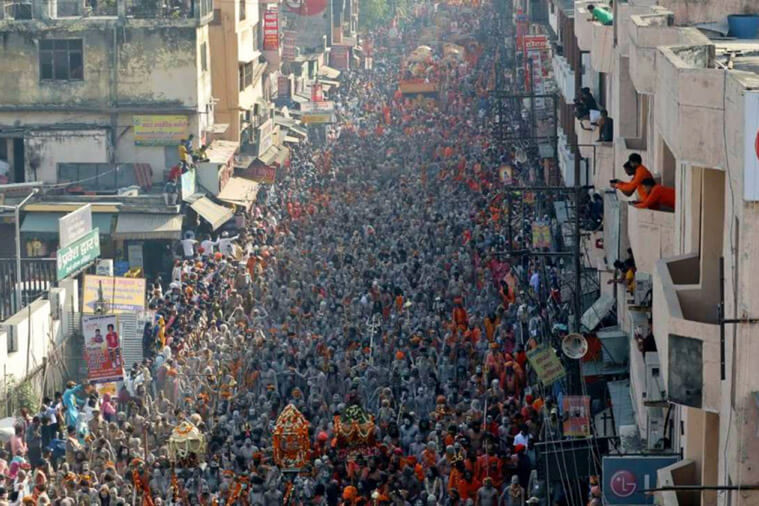
What started as a small gathering of a limited number of saints and yogis, has now become to be known as the “world’s largest congregation of religious pilgrims”. Kumbh Mela, widely popular for its grandeur and zealous devotees is a spiritual gathering that takes place four times every 12 years at four holy places of India namely, Haridwar, Allahabad (Prayagraj), Ujjain, and Nashik. Every time it witnesses millions of pilgrims, along with sadhus and different akharas, coming together to take a dip in the Ganges. Moreover, this event has been engraved on UNESCO’s Representative List of Intangible Cultural Heritage of Humanity.
Kumbh Mela witnesses a chaotic yet peaceful gathering of millions of people who come together to wash their sins at the holy river. With mantras chanting, Aghoris dancing, and the holy ghats all lit up with diyas, the Kumbh Mela will provide you with a mind-blowing experience of a lifetime.
According to Hindu mythology, these gatherings are believed to have originated when the Gods and Demons lived on earth. Back then, both the Gods and demons churned the milky ocean during ‘Samudramanthan’ and thus ‘Amrita’ (the immortal juice) had appeared. But the
demons got greedy and tried to take the ‘Kumbh’ (pitcher) of ‘Amrita’ with them. This led to a battle between the two and the ‘Amrita’ fell on the four holy rivers, Kshipra in Ujjain, the Godavari in Nashik, Ganga in Haridwar, and Sangam in Prayagraj. And from then on, every 12 years Maha Kumbh takes place at these 4 significant sites in rotation, and herds of sadhus flood the holy sites to become a part of the most euphoric religious event in India.
demons got greedy and tried to take the ‘Kumbh’ (pitcher) of ‘Amrita’ with them. This led to a battle between the two and the ‘Amrita’ fell on the four holy rivers, Kshipra in Ujjain, the Godavari in Nashik, Ganga in Haridwar, and Sangam in Prayagraj. And from then on, every 12 years Maha Kumbh takes place at these 4 significant sites in rotation, and herds of sadhus flood the holy sites to become a part of the most euphoric religious event in India.

The most popular holy sects of the mela are the Nagas, also known as naked sadhus, Urdhawavahurs, the ones who expose their bodies to extreme severities, and the Kalpwasis, who bathe three times a day. Apart from these, the other rituals that are performed during this auspicious time are a treat to the eyes.
The Maha Kumbh Mela takes place four times after every 12 years between the months of January and April. Wholehearted travelers and passionate nomads take part in the ceaseless hysteria at the Kumbh and explore the Cultural Heritage of India. This year the mega event was expected to be held at Haridwar from January 14 to April 27. However, due to the surge in Covid-19 cases, this year, the authorities reduced it to the duration of one month starting from
April 1. However, many people arrived in Haridwar days before.
April 1. However, many people arrived in Haridwar days before.
According to the data released by the Kumbh Mela Force, a government body, approximately 9.1 million devotees thronged Mahakumbh and took the holy dip in the Ganga this year despite the skyrocketing Covid-19 cases in India. Out of which, at least six million came to Haridwar in April which further lead to the worst surge in the Covid-19 cases in the second wave of Coronavirus in Uttarakhand.

To ensure the safety of the pilgrims and everybody else in the mega event, the state government had issued certain guidelines and Covid protocols, which included mandatory negative RTPCR test reports conducted 72 hours before attending the event. Moreover, masks were made compulsory and social distancing was advised. More than 10,000 security personnel were deployed on the site to supervise the devotees and around 350 AI-equipped cameras were placed at major sites like Subhash ghat, Brahmakund, Malviya Dweep, and Har-Ki-Pauri. Incase of overcrowding and violation of the protocols by the devotees, the cameras would immediately send the report to the police officials, and the entries were immediately restricted to that area.
However, despite employing so many precautions, there was hardly any adherence to the Covid protocols. Most of the norms were breached, a few number of tests happened, masks were missing and with such a massive gathering, social distancing was impossible. Thus, the mega event turned out to be the hotspot of virus surge in Uttarakhand. More than 1000 seers and officials fell ill and some of them even lost their lives to the deadly virus. This forced some of the biggest holy sects (akhadas), to announce an early end to the event. Later, looking at the dangerous situation at the site, Prime Minister Narendra Modi called for seers to ensure symbolic participation in the Kumbh Mela.
Though the hill state organized the mega event during a spike in the Covid-19 cases, it was not prepared to handle the massive overcrowding that was going to be there.
This made the hill state helpless, and it was extensively criticized for unrestrained violation of Covid-19 protocols. Also, it further contributed to the virus spike in the state, overwhelming hospitals and sparking a shortage of hospital beds and other medical supplies.
